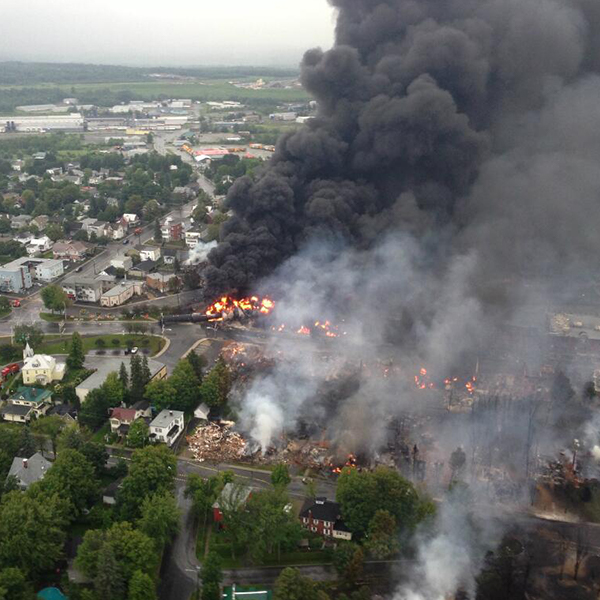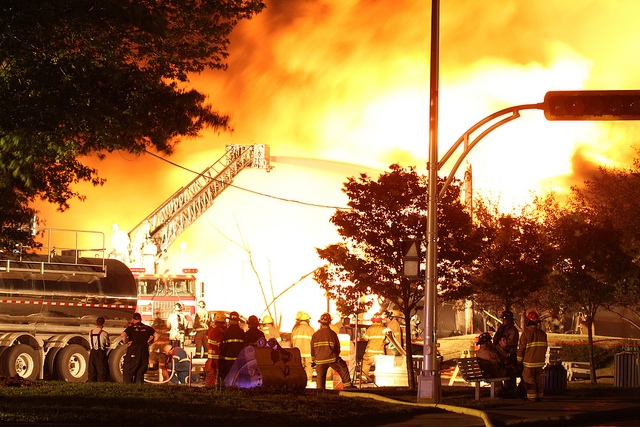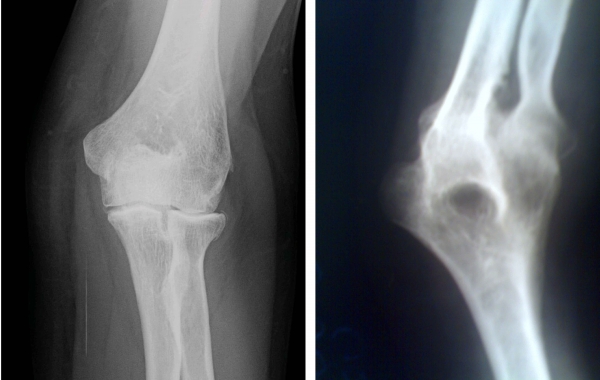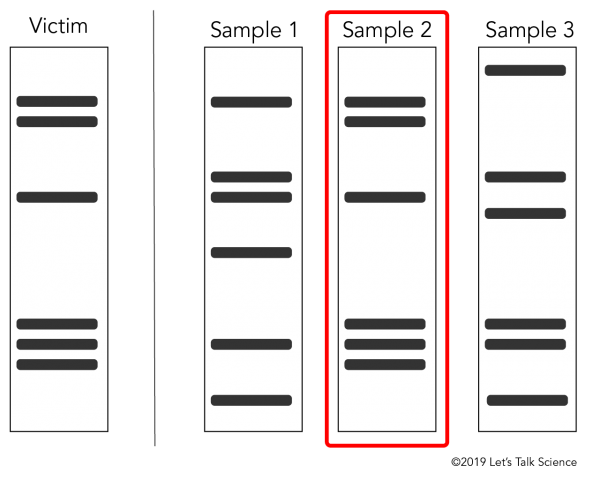CSI Lac-Mégantic: How are victims identified after a disaster?

Lac-Mégantic fire on the day of the train derailment (Sûreté du Québec)

Lac-Mégantic fire on the day of the train derailment (Sûreté du Québec)
How does this align with my curriculum?
| Grade | Course | Topic |
|---|
Learn about forensic pathology and other methods scientists use, like analysing the skeletal system, to identify the dead after a disaster.
On July 5, 2013, tragedy struck the town of Lac-Mégantic in Quebec. A train pulling 72 tank cars full of crude oil derailed. This created a huge explosion. Then a fire destroyed part of the downtown area. It took firefighters nearly 40 hours to put it out. Forty-seven people lost their lives.
Did you know?
In most Canadian provinces, the Royal Canadian Mounted Police (RCMP) handles forensic investigations. In Quebec, it’s the Laboratoire de sciences judiciaires et de médecine légale (LSJML). In Ontario, it’s the Centre of Forensic Sciences (CFS).

What made the Lac-Mégantic fire different from a typical fire?
The Lac-Megantic fire was very different from a typical house fire. Usually, firefighters get house fires under control fairly quickly. It usually takes them between a few minutes and a couple of hours.
When people die in house fires, it’s usually not from burns. Most victims are killed by carbon monoxide (CO) poisoning due to smoke inhalation. Carbon monoxide is a component of smoke. It’s a result of incomplete combustion.
So if someone dies in a house fire, the body usually isn’t badly burned. This makes it easy to identify the person.
But in the Lac-Mégantic fire, victims’ bodies burned for many hours. Most of the flesh (muscles and fat) was reduced to ashes. If any flesh remained, it was because of the position of the body. In most cases, only bones were left. This made it difficult to identify the victims.
The material that fuelled the Lac-Mégantic fire was also very different. Most house fires are fuelled by wood and other building materials. But the Lac-Mégantic was fuelled by the crude oil in the derailed tank cars. This made the fire even more destructive, both to the town and to the victims’ remains.
Who helped to identify the victims?
Once a deadly fire is put out, forensic workers start trying to identify the bodies. Several types of forensic workers help investigate a crime scene. And they use various methods of forensic science to identify victims. Let’s learn about some of these workers and the methods they use.
Forensic pathologists are medical doctors. They determine a victim’s cause of death by performing an autopsy.
Forensic anthropologists study human remains, especially bones. Using a full or partial skeleton, they can determine a victim’s sex, age and cause of death.
Forensic odontologists are scientists who study the teeth of victims.
Did you know?
Forensic science has many branches. They include toxicology, podiatry, optometry and botany.
The Lac-Mégantic disaster was massive. The crime scene was huge. So was the number of victims. But forensic scientists used the same methods as they do to investigate any murder or suspicious death.
How do forensic scientists analyze badly burned remains?
Forensic scientists have several ways of identifying badly burned bodies.
To determine a victim’s sex, forensic anthropologists mainly look at the skull and pelvis. Female skulls are usually smaller than male skulls. And female pelvises are typically wider than male pelvises. That’s because a woman’s pelvic opening needs to be large enough for a baby to pass through.
Forensic anthropologists can look at bone fusion to determine a victim’s age. Bone fusion is a process that occurs in the human body as it ages. Over time, bones often begin to fuse, or knit, together. For example, the fusion of the epiphysis (end) of the humerus and femur bones could indicate a victim’s age.

Forensic scientists might also look for medical implants, such as artificial hips. Each medical implant has a unique serial number. This serial number will be in a database, along with the name of the person who received it.
Forensic odontologists can compare dental records and dental remains. They will look at the size of a victim’s jaw, the number of teeth, and the position of the teeth in the jaw. This can help identify the victim.
Forensic scientists can also use DNA to identify a victim. DNA can be extracted from the bones or even the badly burned flesh of a victim. Investigators will then ask the family of a missing person for an object with the person’s DNA. For example, a person’s toothbrush normally contains some DNA. The two sets of DNA are then compared to determine if they match.

Graphic - Text Version
DNA sample from an unidentified victim at a crime scene on the left, and DNA samples submitted by families with missing persons on the right. You will see that sample B is a match.
Did you know?
Forensic scientists don’t need a person’s full genome sequence to identify a victim. Instead, they look at 13 unique segments, called short tandem repeats (SRTs).
Finally, personal objects sometimes survive even the most intense fire. For example, investigators might find a victim’s wallet. Of course, these objects can lead to false identification. But they can be helpful and practical starting points for identifying a victim.
To confirm a victim’s identify, forensic scientists need to use at least two of these methods. And the two methods need to give the same result.
The Lac-Mégantic investigation took a long time. During the first two weeks, only 22 of the 47 victims were positively identified. They mainly used DNA analysis and dental records to identify these people.
It’s important to remember that forensic investigations can be very difficult. Forensic professionals do incredible work. But sometimes even they can’t identify bodies that have been severely damaged.
Did you know?
Three train workers were accused of criminal negligence causing death in the Lac-Mégantic rail disaster. In 2018, they were found not guilty.
Starting Points
- Have you ever seen a large fire or experienced a house fire? What concerns did you have at the time?
- Do you think the job of a forensic scientist sounds interesting? Why or why not?
- Why was an extensive forensic inquiry necessary in a situation like Lac-Megantic?
- What are some of the social, legal and economic impacts of a forensic investigation such as the investigation at Lac-Megatic?
- How did the Lac-Megantic accident impact on train safety regulations and the transportation of dangerous goods? (Note: This question requires additional research.)
- Why was the Lac-Meganic fire more challenging for the forensics personnel than a typical house fire?
- What information can a forensic anthropologist find out from examining bones?
- What role does a forensic odontologist play in a forensic investigation?
- What are the requirements for fully identifying a victim’s identity when the body has been severely damaged in a fire?
- Forensic investigations rely on collecting and accessing a lot of information and data to help identify victims. What types of data are useful to the police investigators and the forensic pathologists? How have advances in technology helped increase the positive identification of accident victims?
- The Lac-Megantic accident and fire occurred in 2013. Do you recall hearing about this accident in the media at the time? How did it make you feel?
- This article can be used to support teaching and learning of Biology and Anatomy related to pathology, death, and the skeletal system. Concepts introduced include derailed, flesh, forensic, combustion, crude oil, forensic science, forensic pathologists, skull, pelvis, epiphysis, forensic odontologists, and DNA.
- After reading the article, teachers could have students complete a Concept Definition Web learning strategy for the concept of forensic science. Ready-to-use concept Definition Web reproducibles for this article are available in [Google doc] and [PDF] formats.
- To further consolidate learning, teachers could have students use an Issues & Stakeholders learning strategy to explore the Lac-Megantic investigation from the perspective of different stakeholders (e.g., the citizens of the town, town mayor and council, insurance companies, forensics team, Ministry of Transport, railway corporation, manufacturers shipping goods by train, etc.). Ready-to-use Issues & Stakeholders reproducibles for this article are available in [Google doc] and [PDF] formats.
Connecting and Relating
- Have you ever seen a large fire or experienced a house fire? What concerns did you have at the time?
- Do you think the job of a forensic scientist sounds interesting? Why or why not?
Relating Science and Technology to Society and the Environment
- Why was an extensive forensic inquiry necessary in a situation like Lac-Megantic?
- What are some of the social, legal and economic impacts of a forensic investigation such as the investigation at Lac-Megatic?
- How did the Lac-Megantic accident impact on train safety regulations and the transportation of dangerous goods? (Note: This question requires additional research.)
Exploring Concepts
- Why was the Lac-Meganic fire more challenging for the forensics personnel than a typical house fire?
- What information can a forensic anthropologist find out from examining bones?
- What role does a forensic odontologist play in a forensic investigation?
- What are the requirements for fully identifying a victim’s identity when the body has been severely damaged in a fire?
Nature of Science/Nature of Technology
- Forensic investigations rely on collecting and accessing a lot of information and data to help identify victims. What types of data are useful to the police investigators and the forensic pathologists? How have advances in technology helped increase the positive identification of accident victims?
Media Literacy
- The Lac-Megantic accident and fire occurred in 2013. Do you recall hearing about this accident in the media at the time? How did it make you feel?
Teaching Suggestions
- This article can be used to support teaching and learning of Biology and Anatomy related to pathology, death, and the skeletal system. Concepts introduced include derailed, flesh, forensic, combustion, crude oil, forensic science, forensic pathologists, skull, pelvis, epiphysis, forensic odontologists, and DNA.
- After reading the article, teachers could have students complete a Concept Definition Web learning strategy for the concept of forensic science. Ready-to-use concept Definition Web reproducibles for this article are available in [Google doc] and [PDF] formats.
- To further consolidate learning, teachers could have students use an Issues & Stakeholders learning strategy to explore the Lac-Megantic investigation from the perspective of different stakeholders (e.g., the citizens of the town, town mayor and council, insurance companies, forensics team, Ministry of Transport, railway corporation, manufacturers shipping goods by train, etc.). Ready-to-use Issues & Stakeholders reproducibles for this article are available in [Google doc] and [PDF] formats.
Learn more
What is a DNA Fingerprint? (2016)
Fact sheet from YourGenome providing an overview of DNA fingerprinting and DNA profiling, including diagrams, stats, and images explaining what it is, how it’s done, and what it might be used for. Note that this resource was also used as a reference.
The Real Science of Forensics (2015)
SciShow video (9:23 min.) discussion of how real-life forensics differs from the way it is portrayed on television.
In the Heart of a Tragedy: A Day in the Life of the Lac-Mégantic Investigator-in-Charge (2014)
Article from the Transportation Safety Board of Canada describing the role of the investigator that was in charge of the crime scene investigation after the Lac-Megantic rail disaster.
References
Crime Scene Investigator EDU. (n.d.). What is forensics?
Dotson, J. D. (2018, October 19). List of forensics techniques. Sciencing.
Khatri, M. (2019, March 14). Smoke inhalation. WebMD.
Muise, M. (2017, April 12). Lac-Mégantic victims died violent, avoidable deaths: Coroner. Montreal Gazette.
Ulis, L., & Gauthier, G. (2009). Secrets d’ossements : la science au service des énigmes de l’histoire EDP Sciences.
Valiante, G. (2019, January 18). Lac-Mégantic rail disaster. The Canadian Encyclopedia.